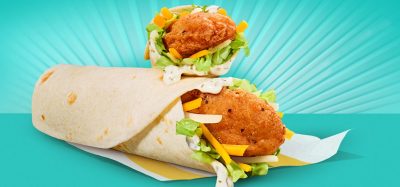How to make your brand more lovable
- Like
- Digg
- Del
- Tumblr
- VKontakte
- Buffer
- Love This
- Odnoklassniki
- Meneame
- Blogger
- Amazon
- Yahoo Mail
- Gmail
- AOL
- Newsvine
- HackerNews
- Evernote
- MySpace
- Mail.ru
- Viadeo
- Line
- Comments
- Yummly
- SMS
- Viber
- Telegram
- Subscribe
- Skype
- Facebook Messenger
- Kakao
- LiveJournal
- Yammer
- Edgar
- Fintel
- Mix
- Instapaper
- Copy Link
Posted: 25 August 2021 | Louise Findlay-Wilson | No comments yet
Louise Findlay-Wilson looks at what makes a brand loved by consumers and how this can impact their loyalty.


According to our Brand Love study, we’re three times more likely to recommend a brand we love and twice as likely to stick with it when it makes mistakes. Such loyalty and recommendation have a profound commercial impact; for example, in a typical online business, while only eight percent of customers may be repeat buyers, they account for a disproportionate 40 percent of turnover.
So it pays to be loveable…but how do food and drink brands manage to achieve it?
Becoming a loveable brand
Let’s first discount some things. While innovation may set you apart from the pack, loved brands aren’t necessarily the most innovative; just one in 10 marketers we interviewed believe innovation counts.
Love isn’t about price or customer support either. Only 33 percent think value for money is important for brand love, and 34 percent believe it is determined by a company’s customer support.
Instead, our research suggests that a brand is loved when it has values which are in sync with the customer’s own values and are closely tied with their identity (55 and 38 percent respectively). Loved brands also need to be part of someone’s life (42 percent).
Susan O’Brien, Chief Marketing Officer at Just Eat confirmed this when speaking to PR Week magazine a couple of years ago. “You need those rational drivers – a product that works, is fit for purpose and offers consumers something of value,” she said. “But equally, you need the emotional drivers too. Something that establishes a connection with those consumers – proving we care about the same causes and concerns they do…”
Brand love centres around six key themes:
- Good – not just providing good products, but also ‘doing’ good
- Quality – loveable brands deliver both on good quality products and a quality experience which is sustained over time
- Customers – how they are understood and treated is of utmost importance
- Time – longevity is important in the sense of offering quality over a long time, but it’s also vital to take time to understand the consumer
- Value – in the context of loved brands this means offering good value and valuing the customer, as well as sharing their values
- Authenticity – trust is critical and ensuring you are genuine is a way to make your brand stand apart.
Where you fit
I’d argue that there are plenty of opportunities for food and drink brands to find that common ground with their consumers that they so crave. After all, a whole host of social, environmental and ethical movements which people might identify with are tied up in what we eat and drink – health, animal welfare, the environment, and so on.
Food and drink also play an intimate part in how we live our lives, sitting at the heart of any event (whether it’s sport, family, friends, on-the-move). But food and drink brands shouldn’t take this role for granted – to stand out they need to be loved.
To achieve this lovable status, brands need to pick through all of this and identify the lifestyle, values and identity of their target consumers; then draw on this as the develop their own values, marketing and wider business approach.
Examples of loveable brands
Morrisons
Morrisons, for example, was one of the brands identified by our marketers as very loveable. This status appears to be derived from its values, which are showcased right across the business. The UK’s fourth largest grocer doesn’t just ‘do’ retail, it also has 18 manufacturing sites, bakeries, abattoirs, fishing fleets and egg farms.
Despite this size and diversity, the business sees itself as a family and when people join, either in store or on their farms, they are welcomed ‘into the family’. It’s easy to see how this family feel fits with its customers – people doing a family shop.


The company also seems to chime with the values of ethical shoppers, with its no waste, sustainable ethos. Moreover, it has led endless initiatives for disadvantaged families during lockdown, but in an unshowy way. It feels ‘decent’.
With such an array of options available to consumers – from the budget conscious retailers to the high-end – Morrisons seems to have carved out a niche that reflects the values of a sizeable number of consumers. No easy feat.
Marmite
Marmite is a brilliant example of a brand which reinforces its customers sense of self, with its ‘love it or hate it’ campaign. This is marketing brilliance; even people who aren’t fans seem to be defined by it!
This is no happy accident. Marmite recognised early on that it divided opinion on the taste front. So rather than try to win over the haters by diluting its offering or changing its recipe, for years it has reinforced and revelled in its uniqueness. Most recently, licensing deals saw Marmite flavoured hummus and Lynx Marmite hit our shelves, underscoring that its strategy as a ‘courter of controversy’ is alive and kicking.
Red Bull
For a brand which has put itself squarely at the centre of a lifestyle, Red Bull takes some beating. Its marketing strategy is not focused on promoting the popular energy drink’s ingredients or flavour, instead it’s all about creating a brand that embodies a distinct lifestyle and audience.
If you look at the Red Bull website, there’s no immediate reference to products, rather it’s a space devoted to extreme sports, gaming and music. The site goes all out to resonate with and entertain the target audience and at the same time encapsulates the spirit of the brand.
Red Bull knows its place. It sees itself as part and parcel of a young, high octane life, giving its consumers the ‘oomph’ to do the things they want to do. This intimate understanding of its target audience’s life (actual or aspirational) is smart. Supporting those passions with crystal-clear, committed marketing is ingenious.
Conclusion
As these examples show, making your food or drink brand loveable takes time and commitment. You need so much more than a good product. You’ve got to understand what makes your customers tick – in terms of values, self-identity and lifestyle – and ensure your brand, its marketing and indeed your wider business decisions are in sync with this.
Achieve this and your customers will show you the love; and it’s well worth the hard work, as our research shows, consumers are far more likely to be tolerant when a brand they love makes mistakes. People will give great brands, or the ones they love, 2.44 more chances to mess up before they take their custom elsewhere. In other words, given that ‘ordinary’ brands can make on average two mistakes without being punished, a great or loved brand can, on average, make just over four mistakes and people will generally stay loyal.
About the author
Louise Findlay-Wilson is a regular speaker and commentator on PR, digital and social media and owns leading agency, Energy PR. In a PR career spanning over 30 years, Louise has worked with a huge array of B2B and consumer brands. From major names such as the BBC, Lloyds Bank, Capita, Cap Gemini, Schwartz, 20th Century Fox and St Paul’s Cathedral through to exciting, ambitious start-ups and fast-growing SMEs – helping them use PR to drive and accelerate their growth.








